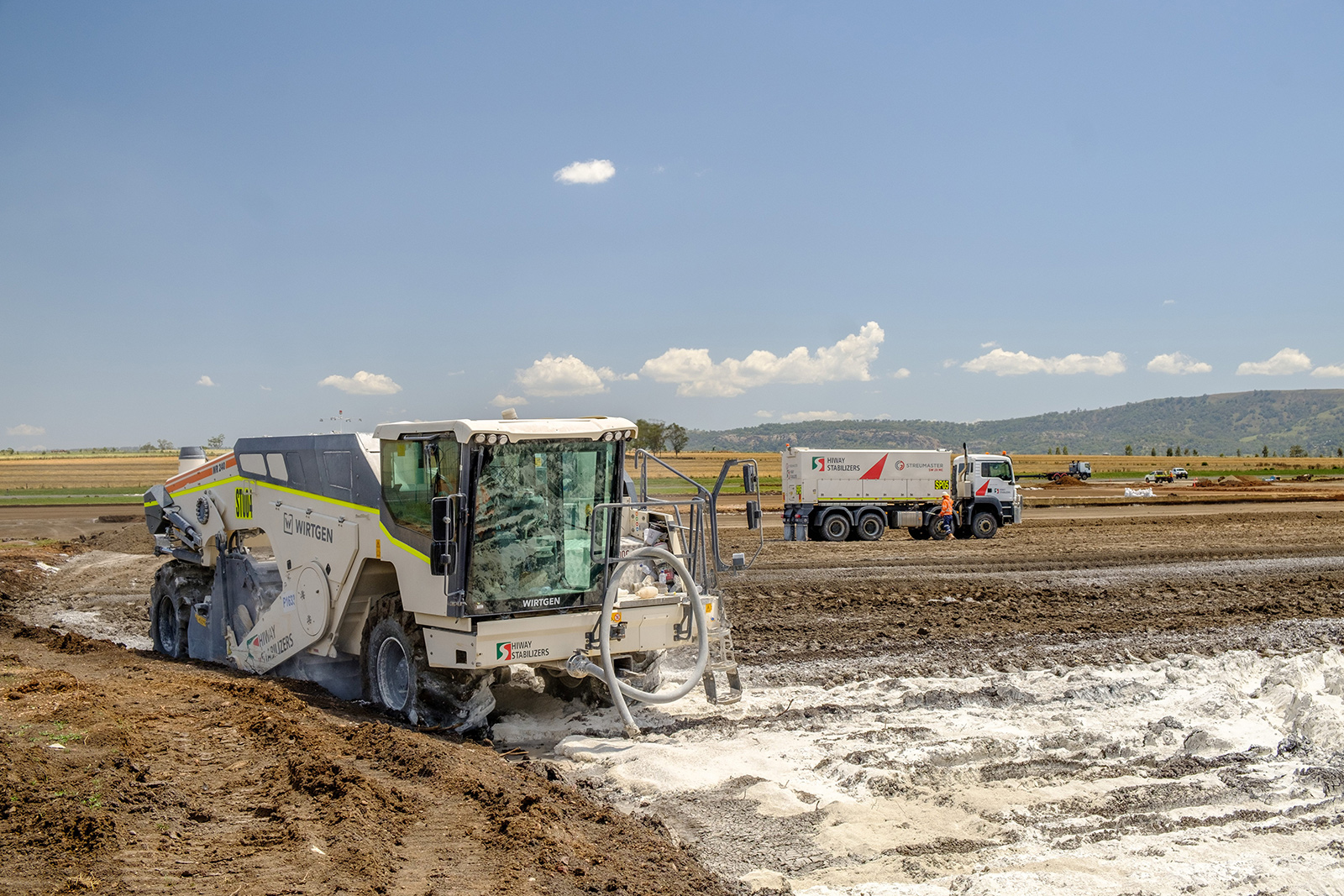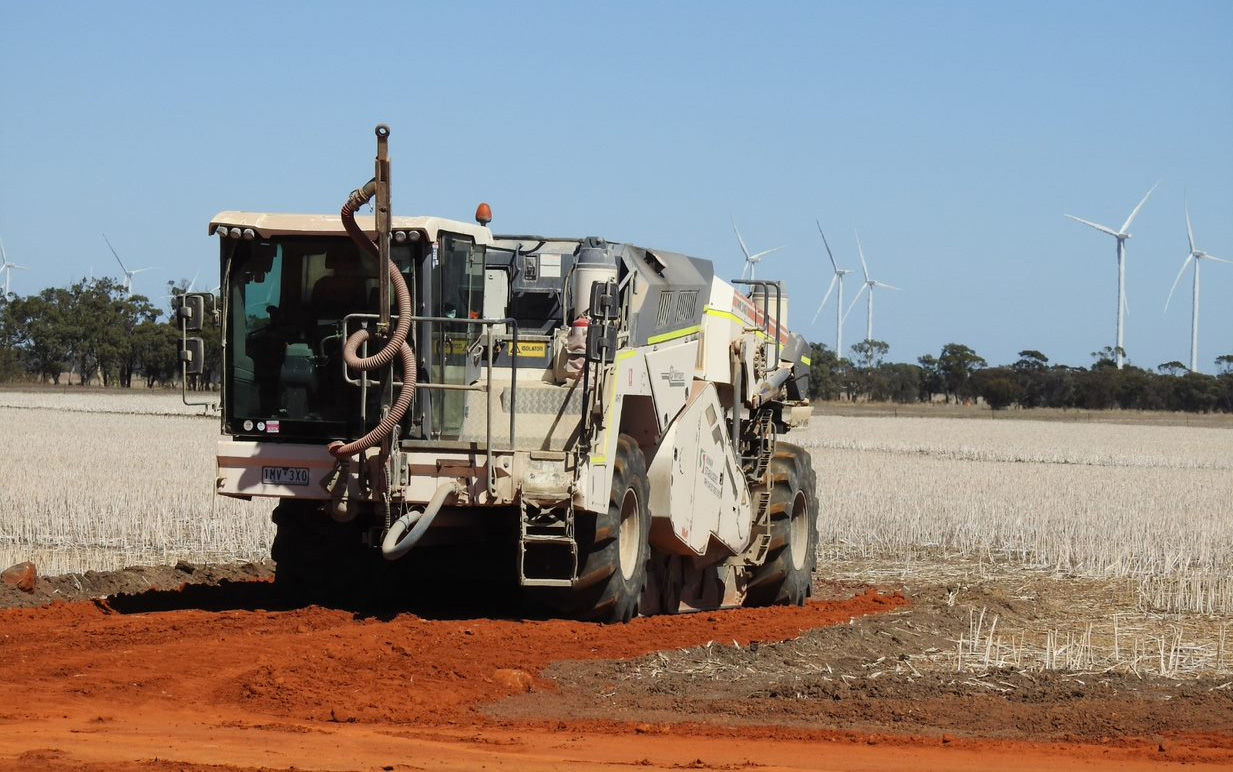Quicklime and hydrated lime are often used in construction applications to chemically modify and stabilize fine grained soils and for drying wet soils. Treatment of the soils with lime helps provide a sound base for the construction of roads, wind farms, pipe trenches, stop banks and numerous other applications.
Lime can be used almost all year round for effective soil drying and soil stabilization using lime can occur almost all year round. In a road construction context, the correct application of quicklime or hydrated lime can improve load bearing performance, optimize moisture content, pavement durability and assist to avoid costly delays in project timelines.

There are essentially two types of soil improvement when using either quicklime or hydrated lime:
- soil modification
- soil stabilization
The use of lime can modify almost all fine-grained soils to some extent and the most dramatic improvement occurs in clay soils of moderate to high plasticity.
Modification primarily occurs due to the exchange of calcium cations supplied by the lime. The clay surface mineralogy is altered as it reacts with the calcium ions to form cementitious products. This will result in a decrease in plasticity and a reduction in swelling and moisture-holding capacity, ultimately leading to improved stability.
Soil stabilization occurs when the proper amount of lime is added to a reactive soil to initiate the development of cementitious products. Stabilization differs from modification in that a significant increase in strength is developed over the longer term through an on-going pozzolanic reaction. This reaction results in the formation of calcium silicate and calcium aluminate hydrates as the calcium from the lime reacts with the soluble forms of aluminates and silicates solubilized from the clay mineral surface. This reaction can begin quickly and is responsible for some of the effects of soil modification. The full-term pozzolanic reaction can continue for a long period of time, often for many years resulting in sustained strength gains and long term durability of the lime stabilized soils.

Graymont quicklime is supplied in different size gradings from finely ground to coarser pebble quicklime material. Hydrated lime is also available for other roading applications including foamed bitumen stabilization.
Contact our sales team to enquire about our soil stabilization products.
Acknowledgement
Graymont would like to acknowledge and thank the National Lime Association for access to web content. Graymont would also like to thank Hiway Stabilizers for the use of images.
